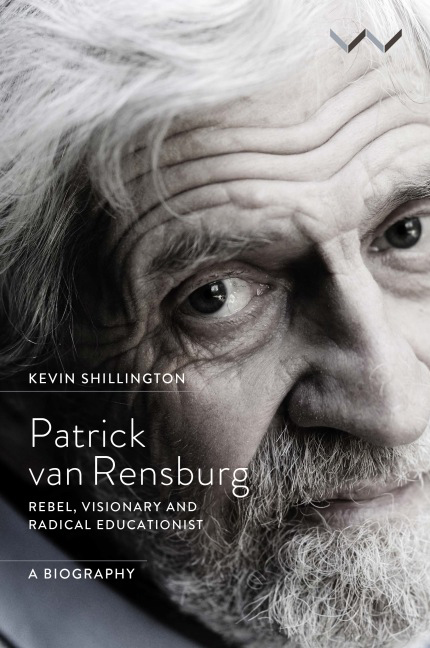Book contents
- Frontmatter
- Dedication
- Contents
- Acknowledgements
- Abbreviations and Acronyms
- List of Illustrations
- Maps
- Introduction
- 1 Origins and Identity in South Africa
- 2 An Anglophone South African, 1936–1948
- 3 The Making of an Afrikaner, 1949–1953
- 4 Diplomat and Rebel, 1953–1957
- 5 Anti-Apartheid Activist, 1957–1959
- 6 Boycott, 1959–1960
- 7 Into Exile, 1960–1961
- 8 Return to Africa, 1961–1962
- 9 The Founding of Swaneng Hill School, 1962–1963
- 10 Challenging ‘The Ladder to Privilege’, 1963–1965
- 11 The Alternative Educationist, 1965–1967
- 12 Expansion and Replication, 1967–1969
- 13 Time of Crisis, 1969–1971
- 14 Education with Production, the 1970s
- 15 Foundation for Education with Production and Spreading the Word, the 1980s
- 16 Education with Production and South Africa, the 1990s
- 17 Return to Botswana
- Epilogue
- Notes
- Bibliography
- Index
3 - The Making of an Afrikaner, 1949–1953
Published online by Cambridge University Press: 10 September 2020
- Frontmatter
- Dedication
- Contents
- Acknowledgements
- Abbreviations and Acronyms
- List of Illustrations
- Maps
- Introduction
- 1 Origins and Identity in South Africa
- 2 An Anglophone South African, 1936–1948
- 3 The Making of an Afrikaner, 1949–1953
- 4 Diplomat and Rebel, 1953–1957
- 5 Anti-Apartheid Activist, 1957–1959
- 6 Boycott, 1959–1960
- 7 Into Exile, 1960–1961
- 8 Return to Africa, 1961–1962
- 9 The Founding of Swaneng Hill School, 1962–1963
- 10 Challenging ‘The Ladder to Privilege’, 1963–1965
- 11 The Alternative Educationist, 1965–1967
- 12 Expansion and Replication, 1967–1969
- 13 Time of Crisis, 1969–1971
- 14 Education with Production, the 1970s
- 15 Foundation for Education with Production and Spreading the Word, the 1980s
- 16 Education with Production and South Africa, the 1990s
- 17 Return to Botswana
- Epilogue
- Notes
- Bibliography
- Index
Summary
In January 1949 Patrick heard that he had passed the civil service exam and that he was to report to the magistrate's office in Durban. He went along with a copy of his matriculation certificate, but was told he also had to bring a copy of his birth certificate. He turned to his uncle Jumbo, who produced the document. Patrick was shocked to find that his surname on the birth certificate was ‘van Rensburg’.
The magistrate insisted he must use his officially registered name, and Patrick and Jumbo each had to make a sworn declaration that Patrick van Rensburg and Patrick Lagesse (the name on his matriculation certificate) were one and the same person. He recollected being quite upset about the ‘conspiracy of silence’ that he felt the family had practised on him. Nor was he mollified by Uncle Pat's offer to adopt him formally and change his name by deed poll to Maxwell. He declined the offer. He had had quite enough of ‘unexplained complications’ and having just collected one new name had no inclination to adopt another.
He received a posting to the Office of the Master of the Supreme Court in Pietermaritzburg, where, initially, he shared a room at Uncle Charlie's in Longmarket Street (today's Langalibalele Street). Most of his work entailed sorting out the legal ramifications of deceased persons’ estates. He shared an open-plan office with a number of other clerks, half of whom were Afrikaners and half English-speakers, who rarely socialised outside their own group. Patrick Lagesse had been brought up with the anti-Afrikaner sentiment of a typical Anglophone Natalian. Now, as Patrick van Rensburg, he found himself in the unusual position of being an Anglophone Afrikaner, able to identify with either group.
He was quickly taken under the wing of Michael John Ensor, an Anglophone ex-serviceman who took Patrick home to lunch and won his friendship by playing cricket with him in the office corridors. Interested in learning more about Afrikanerdom, that unknown side of his heritage, he also deliberately socialised with the Afrikaners in the office. Two of the people who were a big influence on him during his four years there were Afrikaners: Daan van Tonder,3 a clerk like himself, though some years older, and Mr J. J. A. Nel, the chief clerk and assistant master.
- Type
- Chapter
- Information
- Patrick van RensburgRebel, Visionary and Radical Educationist, a Biography, pp. 31 - 44Publisher: Wits University PressPrint publication year: 2020



